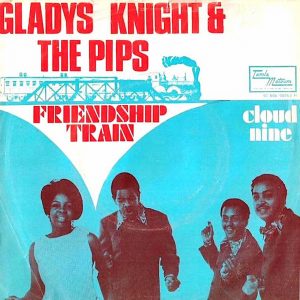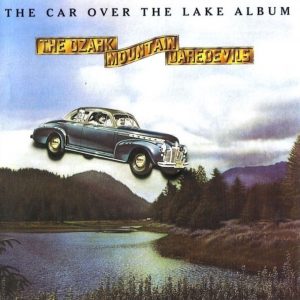At the dawn of 1988, R.E.M. appeared to have the world at their feet. Their fifth and final album for the IRS imprint, 1987’s Document, was en route to becoming their first million-selling LP, and Rolling Stone had recently dubbed the group “America’s Best Rock & Roll band”.
With their IRS contract having expired, R.E.M. began negotiations with a number of different major labels, eventually signing a new deal with Warner Bros in April 1988. This new contract wasn’t necessarily the largest offer on the table but, crucially, Warners assured the group that they would be granted total creative freedom: an issue which was integral to the band’s every move.
During this same period, Bill Berry, Peter Buck, and Mike Mills reconvened for informal sessions at Robbie Collins’ Underground Sound, in the band’s hometown of Athens, Georgia. While in the studio, they laid down some rudimentary demos that vocalist Michael Stipe would later use to frame vocal melodies and arrangements for their new songs.
With the ink on their contract barely dry, R.E.M. then decamped to Ardent Studios in Memphis, Tennessee, to begin recording the basic tracks for their next LP, Green, with Document producer Scott Litt. The Ardent sessions lasted from late May until early July ’88, at which point Litt and the band upped sticks and continued recording and mixing at Bearsville Sound Studios in Upper State, New York.
Listen to Green on Apple Music and Spotify.
Wrapping only two months prior to the LP’s eventual release, in November 1988, the Green sessions were painstaking but productive. As early as Fables Of The Reconstruction’s banjo-assisted ‘Wendell Gee’, the band had been dropping hints that they wished to leave their critically lauded jangle-pop sound behind. Determined to stretch themselves during the Green sessions, Berry, Buck, and Mills often swapped roles, or else downed their usual guitars and drums and picked up acoustic instruments such as accordions and mandolins.
Before the Green sessions began in earnest, Michael Stipe reputedly told his bandmates not to “write any more R.E.M.-type songs”. It was the sort of approach that led David Buckley (author of R.E.M: Fiction: An Alternative Biography) to later declare Green “fascinatingly eclectic.”
Yet while Green’s contents were diverse, they were also compelling. A trio of reflective, acoustic tracks – “Hairshirt,” the dusky, bucolic “You Are The Everything” and the affecting “The Wrong Child” – did eventually make the cut, but they were balanced out by assertive, widescreen rock songs such as “Pop Song ’89,” the strident “Get Up” and the buoyant bubblegum pop of “Stand”: the latter striding to No.6 on the US Billboard singles chart when it was released as the second of the album’s four standalone 45s.
Elsewhere, Michael Stipe’s burgeoning interest in political and ecological matters had already spawned some of both Lifes Rich Pageant’s and Document’s key tracks, including “Fall On Me,” “Cuyahoga” and “Exhuming McCarthy,” and he drew inspiration from similar issues on several of Green’s more hard-hitting tracks such as the churning, pollution-related “Turn You Inside Out” and the anthemic “Orange Crush.” Propelled by Berry’s busy hi-hat and crisp, militaristic snare, the latter’s title referred to the chemical defoliant Agent Orange, manufactured by the Monsanto Corporation and Dow Chemical for the US Department Of Defence, which was used aggressively during the Vietnam War. This particular subject was personal for Stipe as Vietnam was a conflict in which his father had seen active service.
More ambiguous, however, was the brooding “World Leader Pretend.” Though sonically graceful, with the band adroitly aided by Jane Scarpantoni’s sweeping cello and Bob Dylan/Steve Earle sessioneer Bucky Baxter’s swaying pedal steel, the song featured an intriguing Stipe lyric (printed in full on the sleeve) which, he suggested in the band’s 1998 press kit Should We Talk About The Weather?, added up to “a political song, but not a tirade against The Man”.
According to its official tracklisting, Green should have finished after the ominous ebb and swell of the somber “I Remember California,” yet the record also included an untitled 11th track, on which Berry, Buck, and Mills again swapped acoustic instruments. Intimate and joyous – and reputed to be a love song written in tribute to Stipe’s parents – this track brought Green to a fittingly optimistic conclusion at a time when peace-related buzzwords such as “glasnost” and “perestroika” were being bandied around and the world was sensing a distinct thaw in the Cold War.
Michael Stipe had picked up on this feeling of optimism. When Green was due for release, the band requested it should be issued on November 7, 1988, in order to coincide with the U.S. presidential election: a race in which R.E.M. had backed George HW Bush’s Democrat rival, Michael Dukakis. As Stipe later revealed, he had intended the album to be a gesture of hope and encouragement: “I decided that this had to be a record that was incredibly uplifting,” he told Rolling Stone in an April 1989 interview. “Not necessarily happy, but a record that was uplifting to offset the store-bought cynicism and easy condemnation of the world we’re living in now.”
In Should We Talk About The Weather?, Stipe also revealed what the album’s title meant to him: “Obviously there are the political overtones, which I think apply now more than ever before,” he said. “And certainly there’s the kind of nature side – because you think of green and you think of trees. That’s simple. And I think ‘green’ pretty much defines the band and where we are now. We’re kind of starting over. And we’re all very aware of that.”
Released on both sides of the Atlantic in November 1988, the album attracted a brace of highly positive reviews, with respected UK monthly Q awarding it the full five stars, and reviewer Andy Gill’s critique posing a very cogent question: “Are R.E.M. the best band in the world?”
With this warm critical reception further bolstering the momentum that had built since Lifes Rich Pageant went gold in 1986, Green put up a powerful commercial performance, going double-platinum in North America (for sales of over two million) and earning the band their first platinum disc in the U.K., where “Orange Crush” also climbed to No.28 on the singles chart.
Green was supported by R.E.M.’s most intensive – and also most visually developed – tour to date. Far larger in scope than the Work tour, which had followed the release of Document, the Green tour featured extensive back projections and art films playing on the stage, while R.E.M. temporarily expanded to a quintet, with additional guitar and keyboard contributions from their “fifth” member, Peter Holsapple, formerly of critically acclaimed North Carolina jangle-popsters The dB’s.
A mammoth trek that involved 140 dates over four legs, with the band playing shows in Asia and all corners of Europe, as well as two extensive tours of North America, the Green tour was one of the most celebrated and critically hailed rock tours of 1989. Without a doubt, the show this writer witnessed at Manchester’s Apollo Theatre, on 27 May that year, still ranks among one of the greatest gigs he’s ever attended, with R.E.M. simply on fire and rampaging through a monster 26-song set, including seven encores, the last of which was a charming cover of The Velvet Underground’s “After Hours.”
Theoretically, the official final Green date was at Georgia’s Macon Coliseum on November 11, but two nights later R.E.M. performed a remarkable additional show at Atlanta’s Fox Theatre, where their extended set included all of their first LP, Murmur, and also all of Green. Both LPs were performed in order, from start to finish, the event marking the band’s only known live performance of “The Wrong Child.”
Rightly attracting further accolades, R.E.M.’s wonderful full-length documentary Tourfilm (released on VHS in 1990 and on DVD in 2000) captured some of the most memorable performances from the U.S. shows. The band was firing on all cylinders and Stipe was on truly mesmeric form, often introducing the songs with snatches of his own personal favorites such as Syd Barrett’s “Dark Globe” and Gang Of Four’s “We Live As We Dream Alone.” Shot primarily in black-and-white, with lots of intimate, hand-held camera footage, Tourfilm presented a magnificent memento of the Green tour and it remains one of rock’s truly great live performance videos.
Green, then, had thrust R.E.M. into the mainstream of rock’n’roll: the eye of the hurricane, where only the strongest can survive, let alone thrive. Fans who heard new songs “Low” and “Belong” during the tour were aware that Berry, Buck, Mills, and Stipe were already thinking of the future. For the next year, however, they took an extended break to recuperate and then began plotting Out Of Time: the album which would elevate them to global superstardom.




